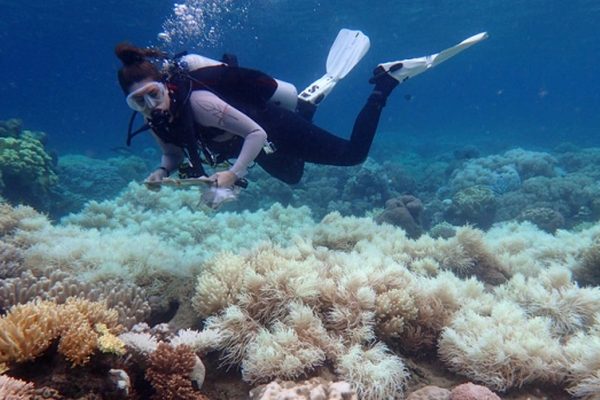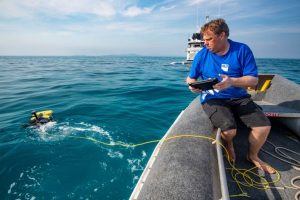Published on the 18/12/2018 | Written by Heather Wright

BabyBots to the rescue in ‘world first’ – and it’s not at all fishy…
An Australian developed undersea robot has delivered microscopic coral larvae directly onto the Great Barrier Reef in an attempt to help restore reefs damaged by bleaching and other issues.
While this year’s project during the reef’s mass coral spawning event was a small-scale pilot, Southern Cross University’s Professor Peter Harrison says with further research and refinement the technique has enormous potential to operate across large areas of reef and multiple sites in a way that hasn’t previously been possible.
“It’s like spreading fertiliser on your lawn.”
 “During this year’s trial, the robot was tethered so it could be monitored precisely but future missions will see it operate alone and on a much larger scale,” Queensland University of Technology Professor Matthew Dunbabin says.
“During this year’s trial, the robot was tethered so it could be monitored precisely but future missions will see it operate alone and on a much larger scale,” Queensland University of Technology Professor Matthew Dunbabin says.
“Using an iPad to program the mission, a signal is sent to deliver the larvae and it is gently pushed out by LarvalBot. It’s like spreading fertiliser on your lawn.
“The robot is very smart, and as it glides along we target where the larvae need to be distributed so new colonies can form and new coral communities can develop.”
The project builds on the work of Dunbabin, who developed RangerBot to help control the coral-killing crown-of-thorns starfish which is responsible for 40 percent of the reef’s decline in coral cover.
Dunbabin re-engineered the RangerBot into LarvalBot for the project, which won the Great Barrier Reef Foundation’s AU$300,000 Out of the Blue Box Reef Innovation Challenge.
The autonomous underwater robot – or underwater crop duster to use Dunbabin’s words – has the capacity to carry around 100,000 coral larvae per mission, with plans to scale up to millions of larvae. Larvae are ‘gently’ released onto damage reef areas where they can settle and develop into coral polyps.
Coral spawn was collected and reared in specially constructed larval pools for nearly a week before being released into the wild.
And the project is no small fry – more than 55 people worked on it, blending ecology and technology in an effort to save the reefs.
Robots are increasingly extending their reach, with underground drones also making their presence felt in Australia and other countries, where they’re being used to automate collection of data in dangerous underground areas.
Here at iStart we’ve long grumped about the proliferation of certain ‘bots’ – chatbots to be specific – with their annoying habits, and we’re not completely sold on Flippy, the ‘world’s first autonomous robotic kitchen assistant’, but LarvalBots? Now that’s something we can get onboard with and are happy to applaud.
Photographer: Gary Cranitch Qld Museum



























